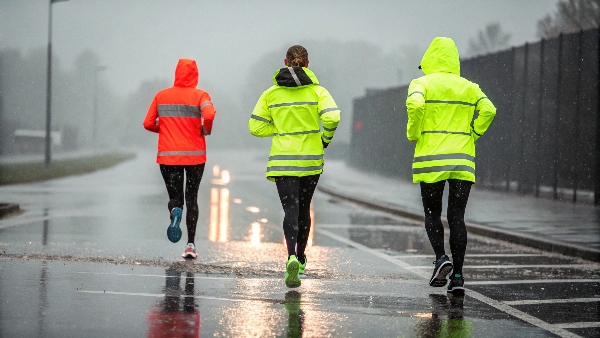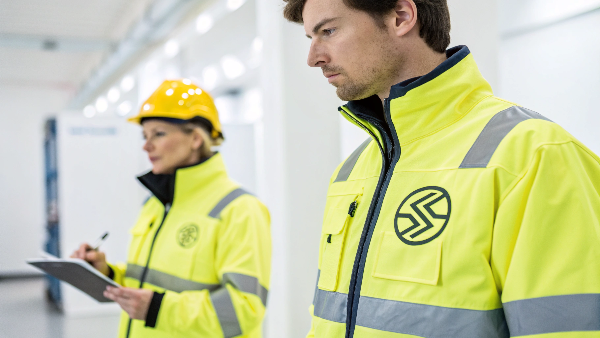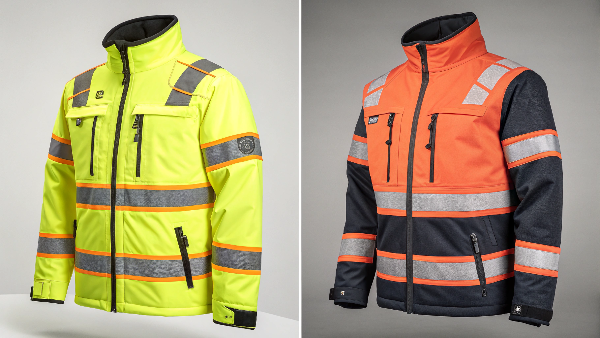Workers face constant visibility dangers. This can lead to terrible accidents. Safety vests provide critical, life-saving conspicuity.
Safety vests are highly effective. They greatly increase a worker's visibility to others. This is true in daylight, low light, and at night, significantly reducing accident risks.
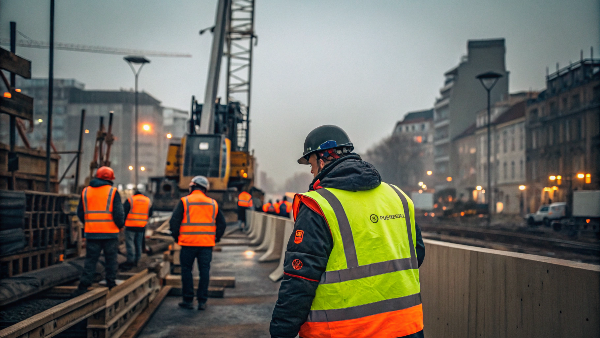
Understanding the general effectiveness of safety vests is just the start. You probably have more detailed questions about how they work and what regulations apply. We're here to explore these aspects further, helping you see why these garments are essential. Let's look at some common questions to build your confidence in this vital piece of PPE.
Do safety vests truly enhance worker protection?
Wondering if a simple vest really helps? This doubt can lead to ignoring vital safety gear. But evidence confirms they are a key safety tool.
Yes, safety vests work by using fluorescent fabrics1 for daytime visibility and retroreflective tapes2 for nighttime. This makes workers stand out clearly to drivers and equipment operators.
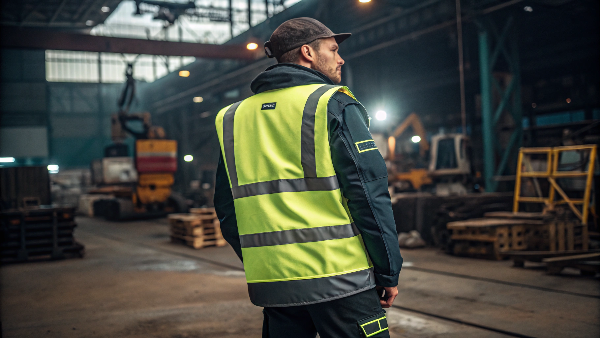
Safety vests are not just pieces of fabric; they are engineered life-savers. At Vissafety, we've dedicated years to perfecting their design. The effectiveness comes from two main features working together.
How Materials Enhance Visibility
First, the fluorescent material. This material absorbs invisible UV light from the sun and converts it into visible light. This makes the vest appear brighter than surrounding objects, especially during dawn and dusk, or overcast days. Common colors like bright yellow-green or orange-red are chosen because our eyes are very sensitive to them.
Second, the retroreflective tapes. These tapes contain tiny glass beads or microprisms. When light from a source, like car headlights, hits these tapes, the light is reflected directly back towards the source. This means the driver sees the vest brightly illuminated, even from a distance, in dark conditions. It’s a simple principle, but incredibly effective. I remember visiting a client's construction site at night; the workers wearing our vests with quality reflective tape were like beacons in the darkness, while those without were nearly invisible.
Standards and Quality
The effectiveness is also tied to standards like EN ISO 204713 (Europe) and ANSI/ISEA 107 (USA). These standards specify the minimum amounts of fluorescent material and retroreflective tape, their placement, and the quality of the materials. As a manufacturer, we ensure our products, like those supplied to clients such as Danny Cheng in California, strictly meet these standards. This guarantees the vest performs as expected.
| Feature | Daytime Visibility | Nighttime Visibility |
|---|---|---|
| Fluorescent Fabric | Excellent, especially at dawn/dusk | Minimal effect |
| Reflective Tape | Minimal effect (unless light source) | Excellent when hit by direct light |
| Bright Colors | Enhances contrast with environment | Color less critical than reflectivity |
How effective are bullet proof vests?
Facing life-threatening gunfire demands ultimate protection. Doubts about a vest's reliability are understandable. These vests are designed to absorb deadly impacts.
Bulletproof vests effectively stop specified firearm calibers. They absorb and disperse bullet energy to prevent penetration, greatly increasing survival chances in an attack.
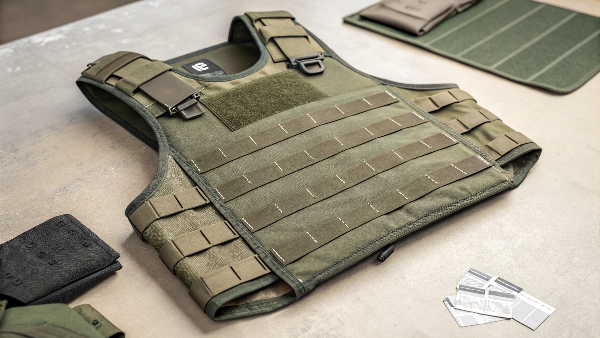
It's important to distinguish between different types of protective vests. While the term "safety vest" is broad, bulletproof vests4 serve a very different purpose than the high-visibility safety vests we specialize in at Vissafety.
Ballistic Protection vs. Conspicuity
Bulletproof vests, or ballistic vests5, are designed to protect the wearer from projectiles like bullets or shrapnel. They achieve this using layers of very strong, tightly woven fibers.
Materials and Standards
Common materials include:
- Kevlar: A synthetic aramid fiber known for its high tensile strength-to-weight ratio.
- Dyneema (UHMWPE): An ultra-high-molecular-weight polyethylene, also incredibly strong and lightweight.
These layers work by "catching" the bullet and dispersing its energy across a wider area, preventing penetration. The effectiveness of these vests is rated by standards like those from the National Institute of Justice (NIJ) in the USA, which categorizes vests by the types of rounds they can stop (e.g., Level IIA, II, IIIA, III, IV).
Our focus at Vissafety is on conspicuity – making people visible to prevent accidents, primarily from vehicles or machinery. While Danny Cheng's needs for his North American clients focus on ANSI/ISEA 107 high-visibility compliance, understanding other safety gear helps appreciate the specific role of each. Bulletproof vests protect against intentional threats, while high-visibility vests protect against accidental ones due to lack of visibility. Both are critical PPE in their respective contexts.
| Vest Type | Primary Protection Mechanism | Key Materials | Governing Standards (Examples) |
|---|---|---|---|
| Bulletproof Vest | Absorbing/dispersing projectile energy | Kevlar, Dyneema, Ceramic Plates | NIJ Standards6 |
| High-Visibility Vest | Enhancing wearer conspicuity | Fluorescent fabrics, Reflective tape | ANSI/ISEA 107, EN ISO 20471 |
What is the OSHA rule for safety vests?
Workplace safety rules can be complex. Not following them can lead to fines and put workers at risk. OSHA gives clear rules for high-visibility clothing.
OSHA requires high-visibility garments for workers in highway/road construction zones and areas with vehicle/equipment traffic. It references ANSI/ISEA 107 standards for compliance.
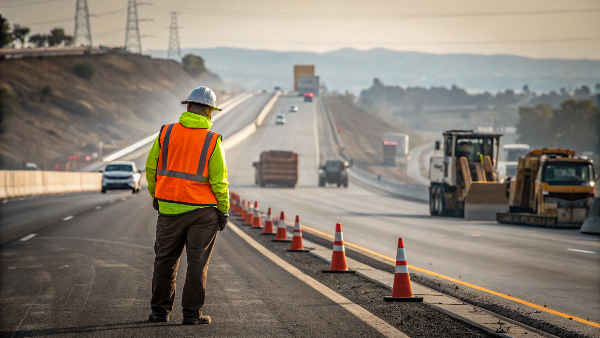
The Occupational Safety and Health Administration (OSHA) in the United States plays a crucial role in ensuring worker safety. For high-visibility apparel, their requirements are quite specific, although they often point to industry consensus standards.
OSHA's Mandate
OSHA's primary regulation concerning high-visibility clothing is found in 23 CFR Part 634, which applies to workers exposed to traffic or construction equipment within the right-of-way of Federal-aid highways. This rule mandates that these workers must wear high-visibility safety apparel that meets the Performance Class 2 or 3 requirements of the ANSI/ISEA 107 standard.
The Role of ANSI/ISEA 107
While OSHA sets the requirement, it defers to the ANSI/ISEA 107 standard for the specific performance criteria of the garments. This standard details the minimum area of high-visibility background material, retroreflective material, and their placement for different classes of garments. This is why we, at Vissafety, ensure our products for clients like Danny Cheng, who supplies to North American markets, are certified to ANSI/ISEA 107. This ensures his customers are OSHA compliant.
Employer Responsibility
Employers are responsible for conducting a hazard assessment to determine if their workers are exposed to risks from moving traffic or equipment. If such risks exist, the employer must provide appropriate high-visibility garments at no cost to the employees and ensure they are used correctly. Our sales team often helps businesses understand these requirements, ensuring they select the right class of vest for their specific work environment.
| OSHA Scenario | High-Visibility Requirement | ANSI/ISEA 107 Class Typically Needed |
|---|---|---|
| Federal-aid highway construction zone | Mandatory | Class 2 or Class 3 |
| Workers exposed to vehicle traffic | Generally required by General Duty Clause | Varies by risk (often Class 2/3) |
| Low-risk environments, far from traffic | May not be explicitly required by OSHA, but good practice | Class 1 or 2 recommended |
How effective are riding vests?
Riders face unique impact and visibility dangers. Accidents can be very serious without the right gear. Special riding vests give vital safety.
Riding vests, for equestrian or motorcycles, offer impact protection and/or high visibility. They greatly reduce injury severity in falls or collisions by absorbing shock and making riders more noticeable.
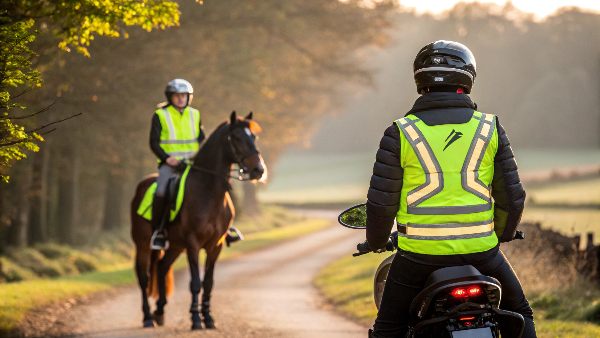
Riding vests cater to different needs depending on the type of riding – equestrian or motorcycling – but both aim to enhance safety.
Equestrian Riding Vests (Body Protectors)
For horse riders, especially in activities like eventing or jumping, body protectors are crucial. These vests are designed primarily for impact protection.
- Function: They aim to reduce the severity of injuries to the torso from a fall or a kick by a horse. They work by absorbing and distributing the force of impact.
- Standards: Reputable equestrian body protectors meet standards like BETA (British Equestrian Trade Association) or ASTM International. These standards specify levels of protection.
- Materials: They often use high-density foam or gel padding. While some may incorporate bright colors, their primary function isn't visibility in the same way as road safety vests.
Motorcycle Riding Vests
For motorcyclists, vests can serve two main purposes: impact protection (often integrated into jackets or as standalone airbag vests) and, very commonly, high visibility.
- Visibility: Motorcycles are smaller than cars and can easily be missed by other drivers. High-visibility vests, often in fluorescent yellow or orange with reflective stripes, significantly increase a motorcyclist's conspicuity, day and night. This is an area where our Vissafety expertise in ANSI/ISEA 107 compliant materials can be applied to create effective motorcycle vests.
- Impact (Airbag Vests): A newer innovation, airbag vests for motorcyclists inflate rapidly upon detecting a crash, providing significant cushioning to the torso, neck, and spine.
While Vissafety's core business is high-visibility workwear, the principles of making people seen are universal. We can, and do, produce high-visibility vests suitable for motorcyclists or other recreational users who need to stand out.
| Riding Type | Primary Vest Function | Key Features | Relevant Standards (Examples) |
|---|---|---|---|
| Equestrian | Impact Protection | Dense foam padding, body-conforming fit | BETA, ASTM F1937 |
| Motorcycling (Visibility) | High Conspicuity | Fluorescent colors, extensive reflective tape | (Similar to ANSI/ISEA 107 principles) |
| Motorcycling (Impact) | Impact Protection | Airbag systems, abrasion-resistant shells | EN 1621, EN 17092 |
What are the disadvantages of safety vests?
Safety gear can sometimes feel bulky. This discomfort might make workers avoid wearing them. Understanding and fixing these issues is key.
Potential downsides include heat discomfort, restricted movement with poor fits, or a false security sense. Good selection and design, like our breathable options, minimize these.
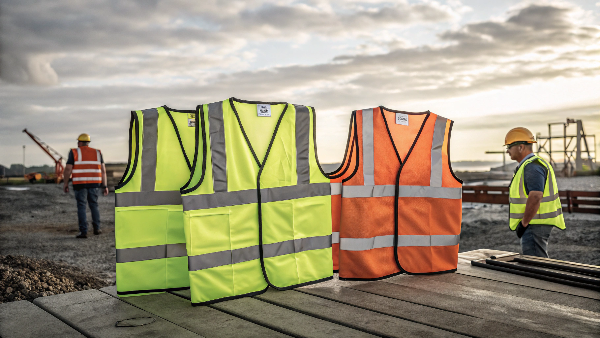
While safety vests are undeniably beneficial, it's true that some wearers experience drawbacks. As a manufacturer, we constantly work to address these. Our collaboration with clients like Danny Cheng, who provided feedback for lightweight, breathable safety jackets for high-temperature environments in 2020, helps us innovate.
Common Concerns and Solutions
- Heat Stress and Comfort:
- Concern: In hot climates, traditional vests can trap heat, leading to discomfort and even heat stress.
- Our Solution: We develop vests using lightweight, breathable mesh fabrics. For example, our Vissafety summer vests are designed for maximum airflow. We also offer vests with moisture-wicking properties.
- Restricted Movement:
- Concern: A poorly fitting or badly designed vest can hinder a worker's range of motion.
- Our Solution: We offer a wide range of sizes and designs, including vests with adjustable straps (side, shoulder) to ensure a snug yet comfortable fit. Our R&D team focuses on ergonomic designs.
- Durability and Maintenance:
- Concern: Vests can get dirty or damaged, reducing their effectiveness and lifespan.
- Our Solution: We use durable materials and reinforced stitching. We also provide clear care instructions to help prolong the vest's life. Proper washing is key to maintaining both fabric integrity and reflectivity.
- Snag Hazards:
- Concern: Loose vests or too many external pockets can become snag hazards around machinery.
- Our Solution: We design vests with streamlined profiles and offer options with internal pockets or breakaway features that allow the vest to tear away if caught, preventing the worker from being pulled into machinery.
- False Sense of Security:
- Concern: Some may feel overly protected and take more risks.
- Our Solution: This is more about training and safety culture. We always emphasize that a safety vest is one part of a larger safety system.
| Disadvantage | Vissafety's Mitigation Strategy | Example Product Feature |
|---|---|---|
| Heat Stress | Lightweight, breathable mesh fabrics; moisture-wicking materials | Summer mesh vests, performance fabrics |
| Restricted Movement | Ergonomic design, multiple sizes, adjustable features | Adjustable Velcro/elastic straps, stretch panels |
| Poor Durability | High-quality materials, reinforced stitching, proper care guides | Ripstop fabrics, double-stitched seams |
| Snag Hazards | Streamlined design, breakaway features, internal pockets | 5-point breakaway vests, sleek profiles |
By continuously listening to feedback and investing in R&D, we strive to make safety vests not just effective, but also comfortable and practical for everyday wear.
Are black safety vests OSHA approved?
Choosing vest colors that comply can be hard. A wrong choice can risk safety and compliance. OSHA rules depend on visibility standards, not just color.
Generally, black safety vests are not OSHA-approved as the primary high-visibility garment. Regulations require fluorescent yellow-green, orange-red, or red for daytime visibility.
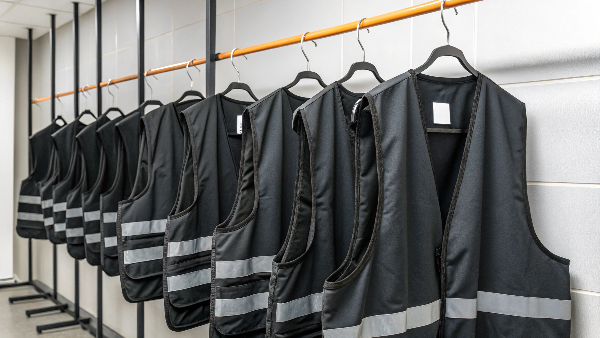
The question of black safety vests and OSHA approval often causes confusion. The key to understanding this lies in the ANSI/ISEA 107 standard, which OSHA references for high-visibility safety apparel (HVSA).
ANSI/ISEA 107 Color Requirements
The ANSI/ISEA 107 standard is very specific about the colors required for the background material of compliant safety vests. These colors must be fluorescent to enhance daytime visibility. The approved fluorescent colors are:
- Yellow-green
- Orange-red
- Red
Black is not a fluorescent color. Therefore, a vest made entirely or primarily of black background material will not meet the requirements for ANSI/ISEA 107 compliant HVSA for daytime visibility.
The Role of Black as a Contrast Color
However, black (and other dark colors) can be used as part of a compliant safety vest ensemble in specific ways:
- Contrast Trim: Black is often used as a contrasting trim around the edges of fluorescent material or between fluorescent sections and retroreflective tape. This can help to define the silhouette of the wearer against complex backgrounds.
- Non-Fluorescent Portions: Some vests, particularly Class 3 garments or safety jackets, might have portions made of non-fluorescent material (like black) on areas less critical for visibility (e.g., lower torso where dirt accumulates, or sleeves on some designs), as long as the minimum required area of fluorescent background material is still met in the designated high-visibility colors.
- Public Safety Vests (ANSI/ISEA 207): There's a separate standard, ANSI/ISEA 207, for public safety vests (e.g., for police). These sometimes incorporate more black or dark blue to distinguish officers, but they still must meet specific requirements for fluorescent and retroreflective material.
For general worker safety under OSHA guidelines referencing ANSI/ISEA 107, the primary background material must be one of the approved fluorescent colors. At Vissafety, our standard safety vests are produced in these compliant fluorescent colors to ensure our clients, like those Danny Cheng serves, meet regulatory requirements without issue.
| Vest Component/Color | Compliance with ANSI/ISEA 107 (General Worker) | Purpose |
|---|---|---|
| Black Background Material | No (as primary material) | Does not provide required daytime fluorescence |
| Fluorescent Yellow-Green | Yes | High daytime visibility, good contrast |
| Fluorescent Orange-Red | Yes | High daytime visibility, good in varied light |
| Fluorescent Red | Yes | High daytime visibility, specific applications |
| Black Contrast Trim | Yes (if fluorescent minimums are met) | Enhances silhouette, can hide dirt |
What's the difference between Class 1 2 and 3 safety vests?
Different worksites have varied risk levels. Using the wrong class of vest puts safety at risk. ANSI/ISEA 1077 defines classes for certain work areas.
Class 1, 2, and 3 safety vests define minimum amounts of background fluorescent and retroreflective material. These correspond to increasing risk levels and worker visibility needs.
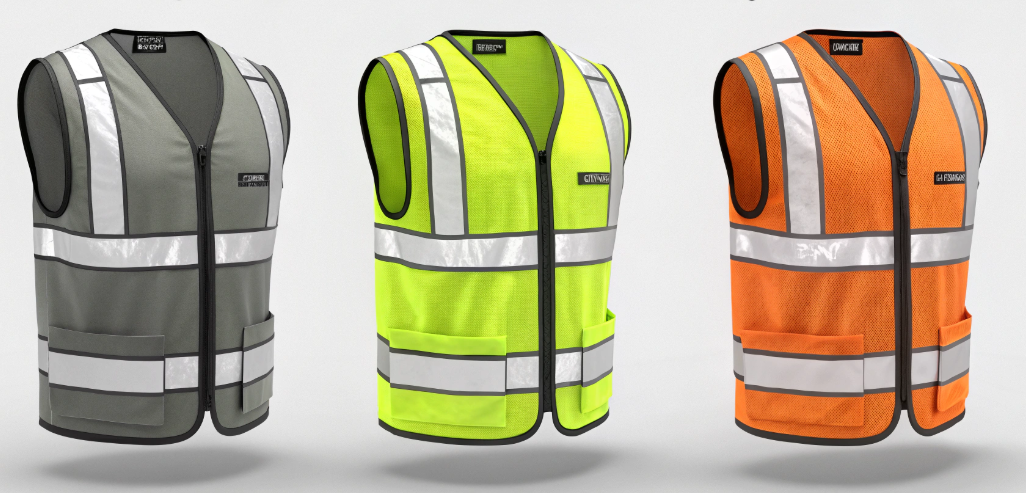
The ANSI/ISEA 107 standard classifies high-visibility safety apparel8 (HVSA) into three performance classes. These classes are determined by the minimum amount of background (fluorescent) material and retroreflective material, as well as the placement of these materials. The goal is to match the level of visibility to the level of risk in the work environment. As a manufacturer, we at Vissafety produce vests in all classes to meet diverse client needs, like those of Danny Cheng who requires specific ANSI/ISEA 107 compliant products for his North American customers.
Understanding the Classes:
- Type O, Class 1:
- Intended Use: For workers in off-road environments (Type O) where struck-by hazards are present but not from roadway traffic or temporary traffic control zones. Examples include parking lot attendants, warehouse workers, or workers in areas with slow-moving equipment (under 25 mph) well separated from traffic.
- Material Requirements: Smallest amount of visible materials. For example, a vest must have at least 0.14 m² (217 in²) of background material and 0.10 m² (155 in²) of retroreflective material.
- Type R or P, Class 2:
- Intended Use: For workers who require greater visibility in poor weather conditions or work environments with risks exceeding Class 1. This includes roadway construction workers (Type R - Roadway), utility workers, survey crews, railway workers, school crossing guards, and public safety personnel (Type P - Public Safety) exposed to traffic exceeding 25 mph.
- Material Requirements: More background and retroreflective material than Class 1. For instance, a Type R Class 2 vest needs 0.50 m² (775 in²) of background material and 0.13 m² (201 in²) of retroreflective material.
- Type R or P, Class 3:
- Intended Use: For workers whose tasks place them in imminent danger from approaching traffic (often exceeding 50 mph) or who need to be conspicuous through a full range of body motions at a minimum of 1,280 feet. This is the highest visibility class. Examples include highway maintenance crews, emergency responders, and flagging crews.
- Material Requirements: Largest amount of visible materials, often requiring coverage on the arms and/or legs (e.g., sleeves on a vest or jacket, or trousers). A Type R Class 3 garment requires 0.80 m² (1240 in²) of background material and 0.20 m² (310 in²) of retroreflective material.
It's crucial for employers to conduct a risk assessment9 to determine the appropriate class of HVSA for their workers. We always advise clients to err on the side of higher visibility if unsure.
| Vest Class | Typical Work Environment | Min. Background Material (ANSI/ISEA 107-2020, Type R example) | Min. Retroreflective Material (ANSI/ISEA 107-2020, Type R example) | Garment Examples |
|---|---|---|---|---|
| Class 1 (Type O) | Off-road, low-speed vehicles, ample separation from traffic | 0.14 m² (217 in²) | 0.10 m² (155 in²) | Simple vests |
| Class 2 (Type R/P) | Roadways (speeds > 25 mph), poor weather, complex backgrounds | 0.50 m² (775 in²) | 0.13 m² (201 in²) | Standard safety vests |
| Class 3 (Type R/P) | High-speed roadways (>50 mph), high-risk, full-body visibility needed | 0.80 m² (1240 in²) | 0.20 m² (310 in²) | Vests with sleeves, jackets, coveralls |
How long do safety vests last?
Safety gear gets worn out with use. A damaged vest is less effective. Knowing when to change a vest is very important for safety.
Safety vests usually last 6 months to 3 years. This depends on use, care, and sun exposure. Replace if faded, torn, dirty, or damaged.
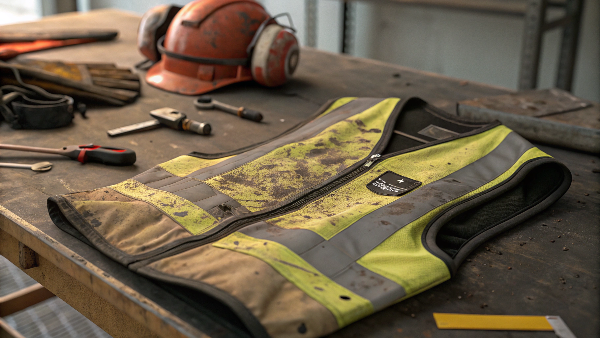
A safety vest's lifespan isn't fixed; it heavily depends on its usage conditions and how well it's maintained. At Vissafety, we use durable materials, but even the best vests will eventually need replacement to ensure optimal performance.
Factors Affecting Lifespan:
- Frequency and Intensity of Use: A vest worn daily in harsh conditions (e.g., construction site with dirt, abrasion, sunlight) will degrade faster than one worn occasionally indoors.
- Care and Maintenance:
- Washing: Improper washing (e.g., wrong temperature, harsh detergents, bleach) can damage the fluorescent fabric and diminish the retroreflective properties of the tape. We always provide care labels with instructions.
- Storage: Storing vests in direct sunlight for extended periods can cause the fluorescent colors to fade.
- Exposure to Elements:
- UV Radiation (Sunlight): This is a major factor. UV rays break down the fluorescent pigments, causing them to lose their brightness over time.
- Dirt and Contaminants: Heavy soiling can obscure the fluorescent material and reduce the reflectivity of the tapes. Some chemicals can also degrade the materials.
- Physical Damage: Rips, tears, burns, or damaged closures (zippers, Velcro) compromise the vest's integrity and safety.
When to Replace a Safety Vest:
There's no exact expiration date, but regular inspection is key. I always tell my clients, including Danny Cheng who prioritizes quality, to train their teams to look for these signs:
- Fading: If the fluorescent color is noticeably dull compared to a new vest, its daytime visibility is reduced.
- Damaged Reflective Tape: If tapes are cracked, peeling, missing, or heavily soiled and cannot be cleaned, nighttime visibility is compromised.
- Physical Damage: Any tears, holes, broken fasteners, or seams coming apart.
- Irremovable Stains: If dirt or grease cannot be washed out and obscures a significant portion of the high-visibility material.
A common industry guideline is to replace vests every 6 months if worn daily, or when any of the above signs are present. Some companies implement a maximum service life (e.g., 3 years from date of issue), regardless of condition, as a precaution.
| Factor Affecting Lifespan | Impact on Vest | Vissafety's Approach |
|---|---|---|
| UV Exposure | Fading of fluorescent material | Use of UV-stabilized pigments, advise proper storage |
| Washing Practices | Damage to reflective tape, color fading | Provide clear care instructions, durable materials |
| Abrasion/Tears | Compromised integrity, reduced material area | Reinforced stitching, robust fabrics |
| Dirt/Contamination | Obscured visibility materials | Easy-to-clean surfaces where possible, wash instructions |
Are safety vests considered PPE?
Knowing PPE types is vital for safety plans. Wrongly classifying gear can affect rules and duties. Safety vests are a main type of PPE.
Yes, safety vests are Personal Protective Equipment (PPE). They are garments designed to protect workers from visibility-related hazards in their workplace, a crucial safety measure.

Absolutely, safety vests fall squarely under the definition of Personal Protective Equipment (PPE). Understanding this classification is important for both employers and employees regarding responsibilities and safety programs.
What is PPE?
Personal Protective Equipment, as defined by organizations like OSHA, refers to equipment worn to minimize exposure to hazards that cause serious workplace injuries and illnesses. These injuries and illnesses may result from contact with chemical, radiological, physical, electrical, mechanical, or other workplace hazards. PPE is designed to protect parts of the body from specific hazards. Examples include gloves, safety glasses, hard hats, respirators, and, of course, high-visibility safety vests.
How Safety Vests Fit the PPE Definition:
- Protection from a Hazard: Safety vests protect workers from the hazard of low visibility. This hazard can lead to struck-by accidents involving vehicles, machinery, or other workers.
- Worn by the Individual: They are garments worn by the individual worker.
- Minimizes Exposure/Risk: By making the wearer more conspicuous, safety vests significantly reduce the risk of not being seen, thereby minimizing exposure to potential accidents.
As a manufacturer of high-visibility clothing, Vissafety takes its role as a PPE provider very seriously. Our mission is to provide top-quality items that meet global standards like EN ISO 20471 and ANSI/ISEA 107, ensuring they effectively perform their protective function. Danny Cheng relies on us for this very reason, to supply compliant and reliable PPE to his clients.
Employer and Employee Responsibilities:
- Employer: Typically responsible for assessing workplace hazards, selecting appropriate PPE (like the correct class of safety vest), providing it to employees (often at no cost), training them on its use and care, and ensuring it's maintained or replaced.
- Employee: Responsible for wearing the provided PPE correctly, attending training, caring for the PPE, and reporting any damage or malfunction.
Safety vests are a fundamental component of many workplace safety programs, particularly in construction, road work, logistics, and any environment where workers are near moving vehicles or equipment.
| PPE Characteristic | Application to Safety Vests |
|---|---|
| Designed to protect from hazard | Protects from low visibility, reducing struck-by accidents. |
| Worn by the individual | Personal garment for individual worker protection. |
| Barrier against hazard | Acts as a visual barrier, making wearer stand out. |
| Reduces risk of injury/illness | Significantly lowers risk of accidents due to being unseen. |
| Part of a safety program | Integral to many occupational health and safety management systems. |
Conclusion
Safety vests are vital PPE. They boost visibility, prevent accidents, and save lives. Choose wisely for full protection and compliance.
-
Explore how fluorescent fabrics enhance visibility and safety for workers, making them crucial in hazardous environments. ↩
-
Learn about the science behind retroreflective tapes and their role in ensuring worker safety, especially at night. ↩
-
Understand the importance of safety standards like EN ISO 20471 in ensuring the quality and effectiveness of safety vests. ↩
-
Explore this link to understand the science behind bulletproof vests and their effectiveness in real-life scenarios. ↩
-
This resource will provide insights into the technology and materials used in ballistic vests for enhanced safety. ↩
-
Understanding NIJ standards is crucial for evaluating the safety and effectiveness of bulletproof vests. ↩
-
Explore this link to understand the ANSI/ISEA 107 standard, which is crucial for ensuring safety in various work environments. ↩
-
Learn about the benefits of high-visibility safety apparel to enhance safety and compliance in hazardous work environments. ↩
-
Discover effective methods for conducting risk assessments to choose the right safety vests for your worksite needs. ↩

